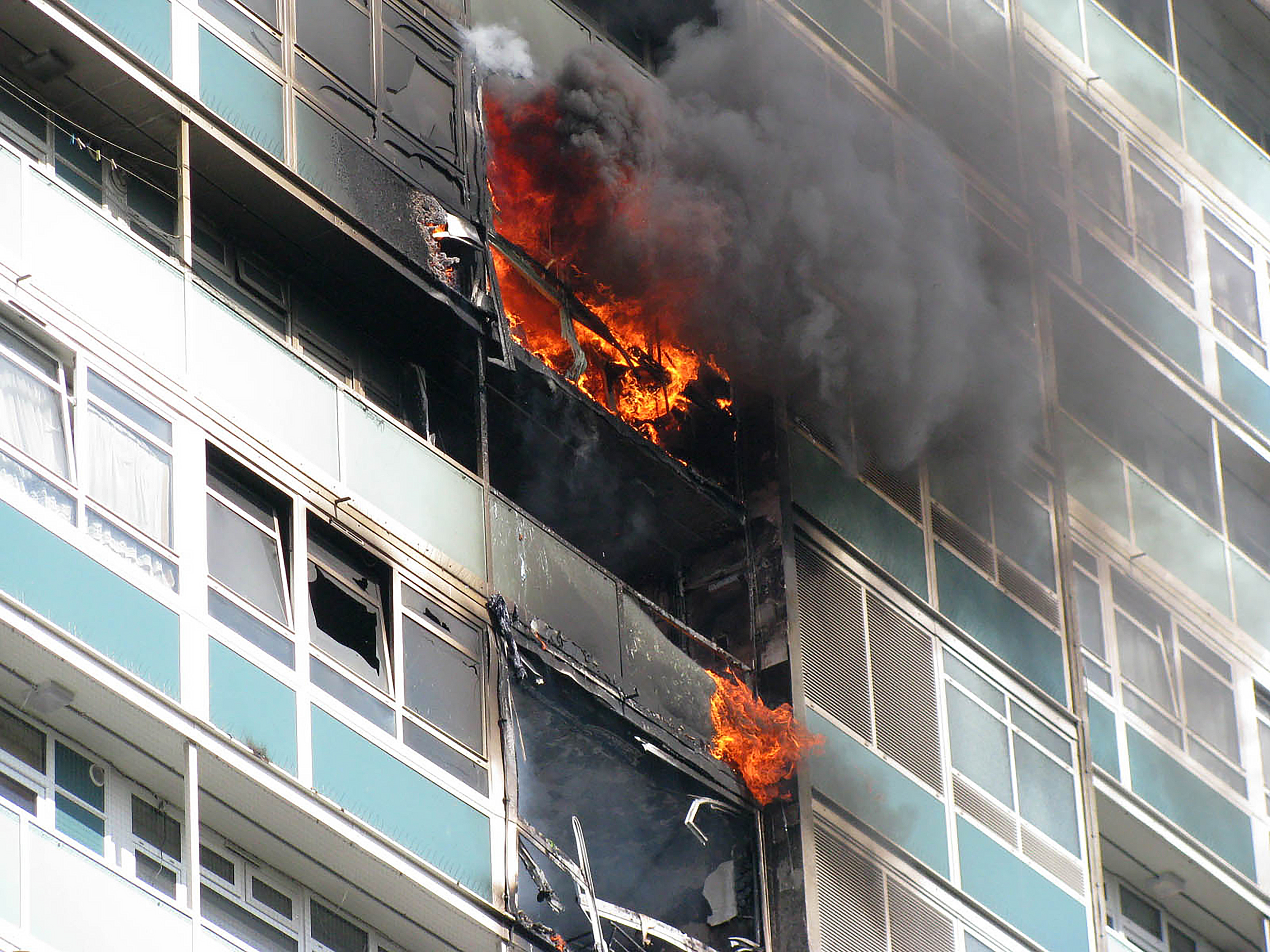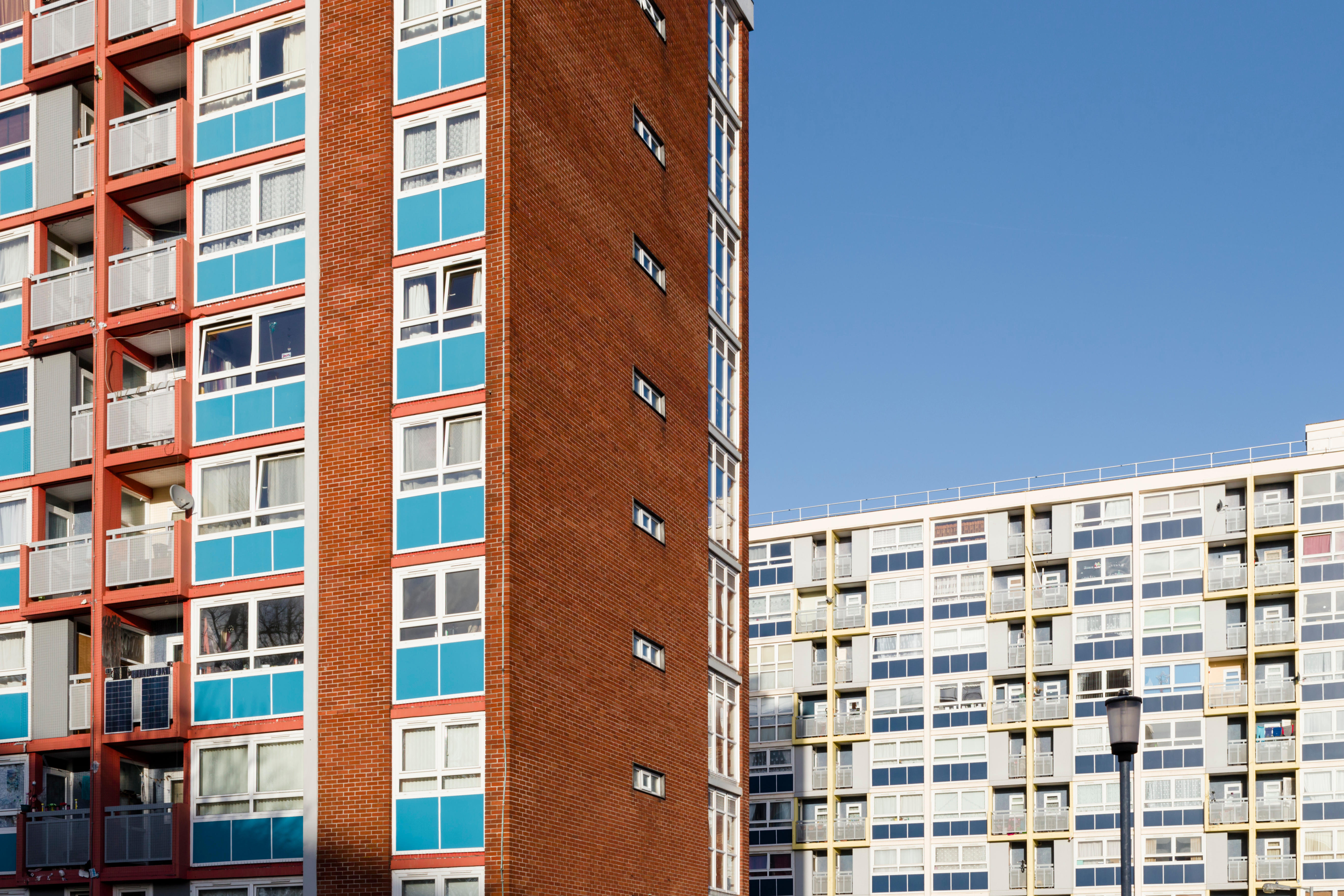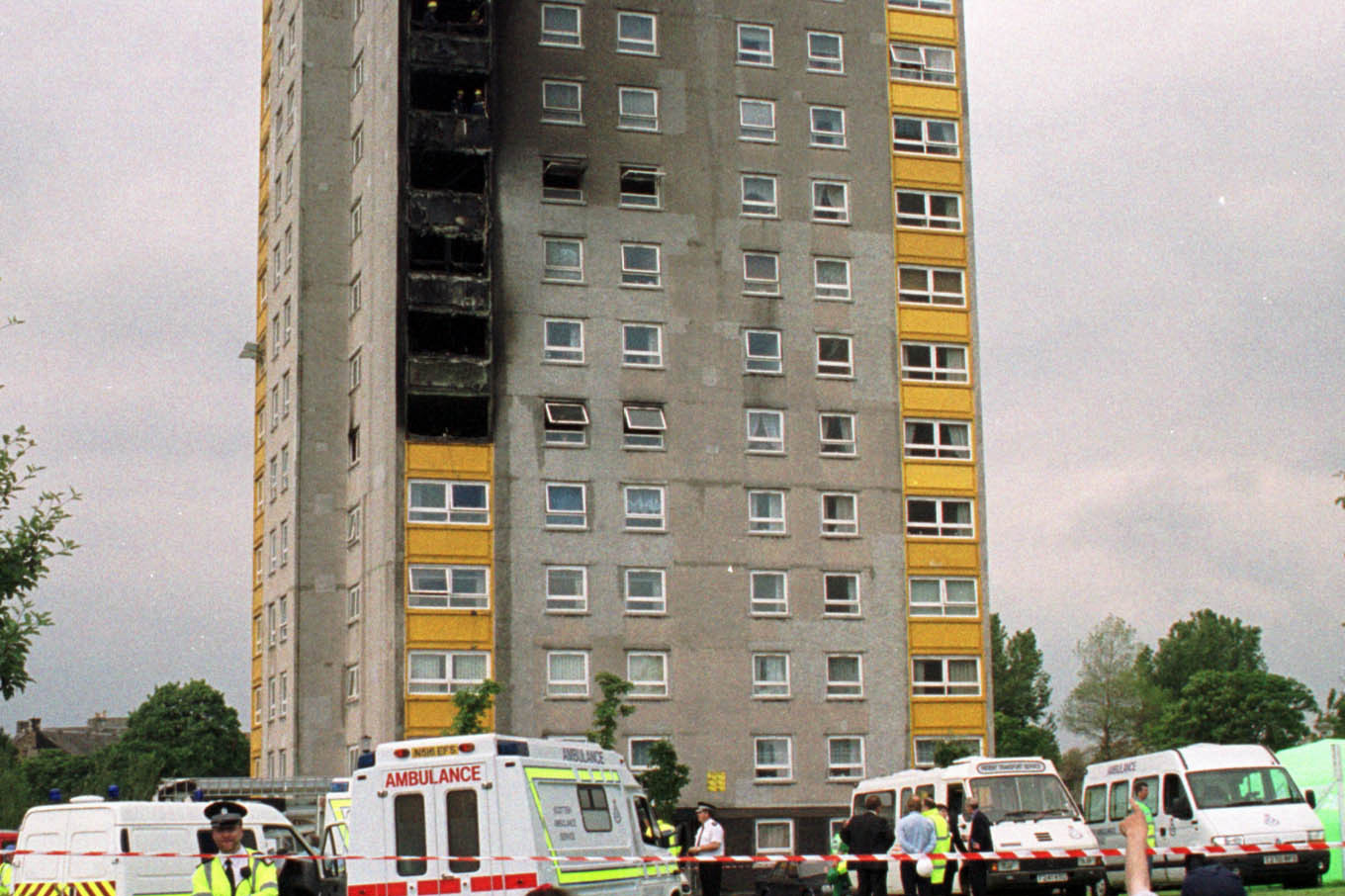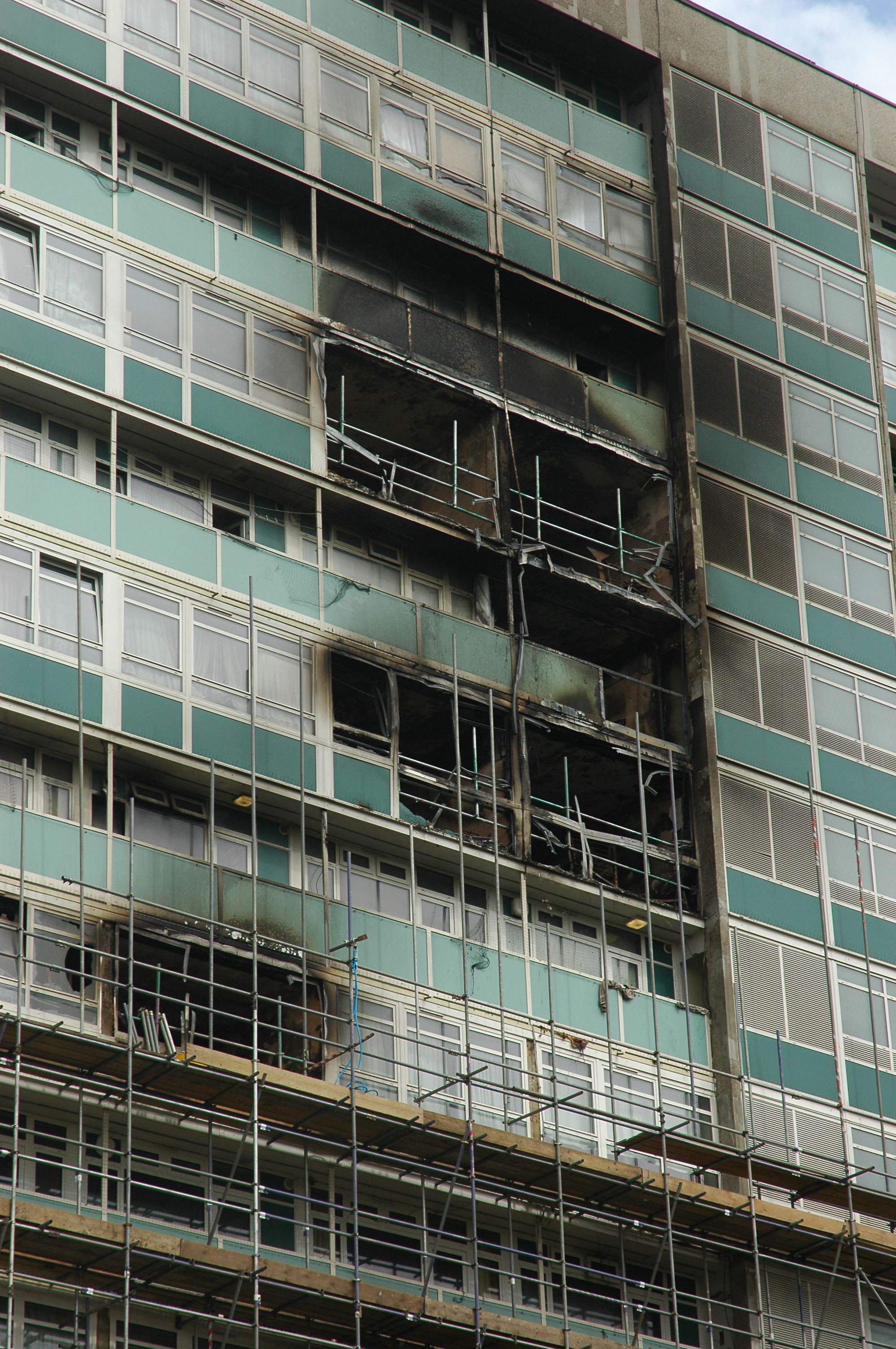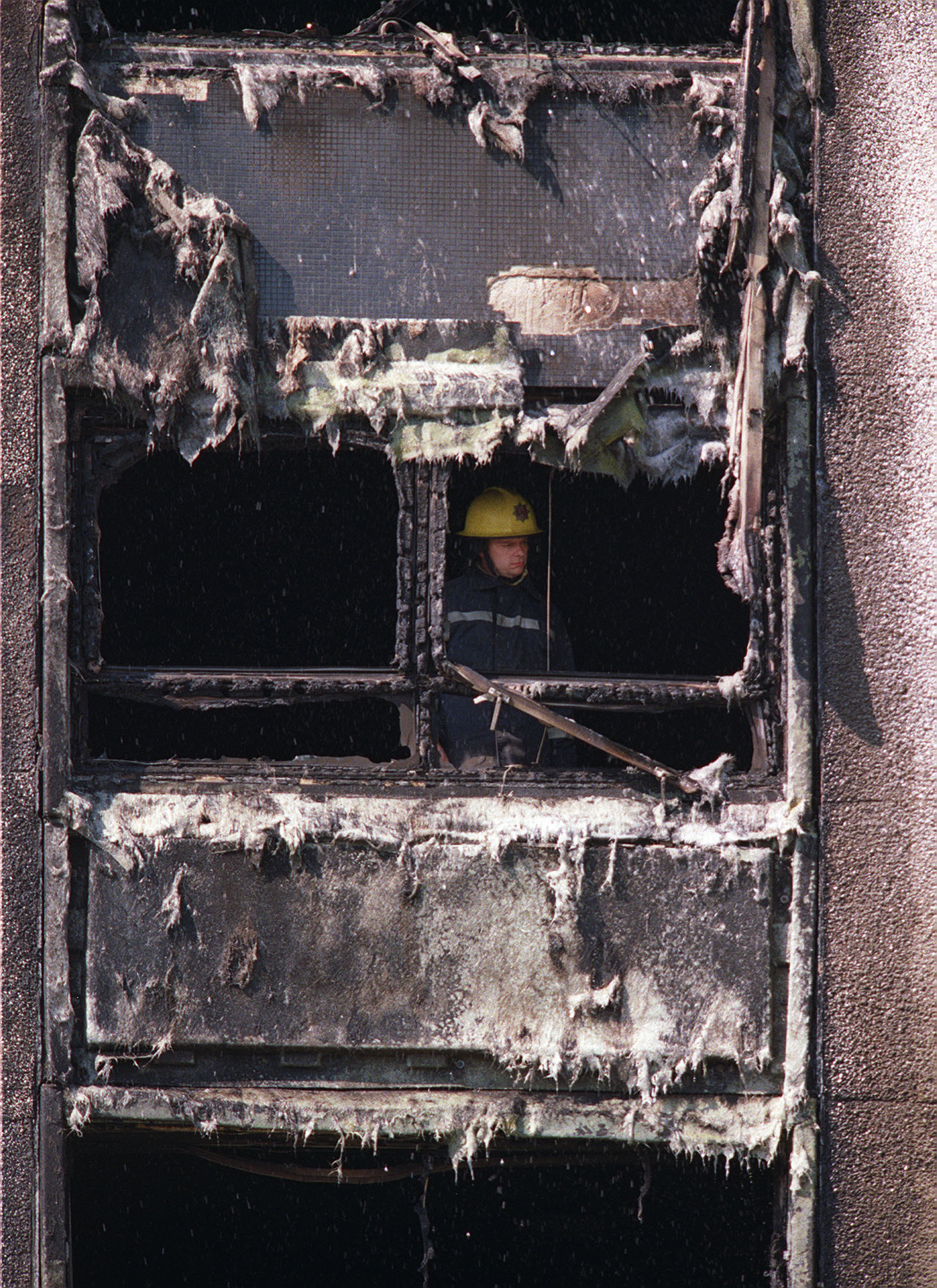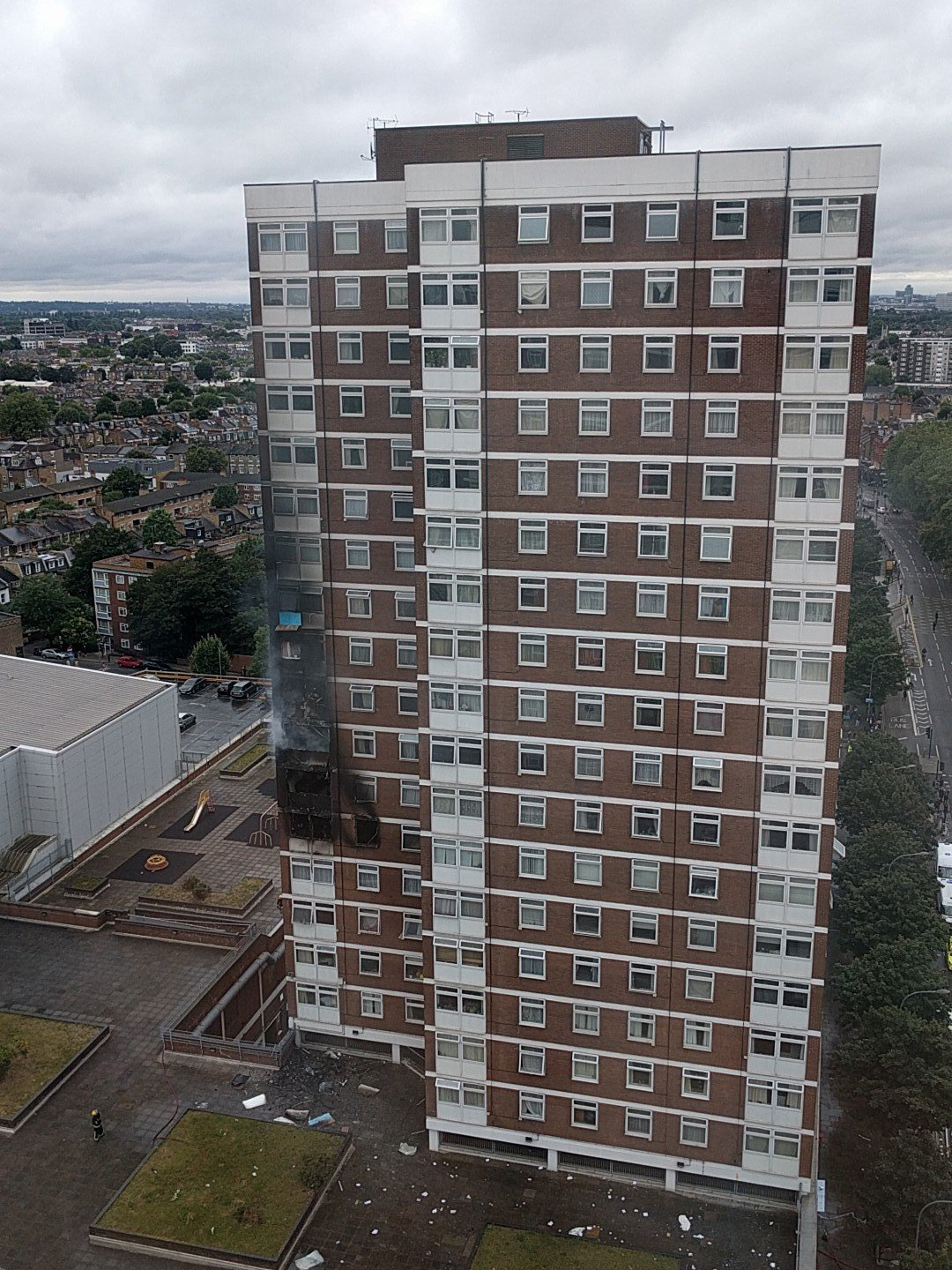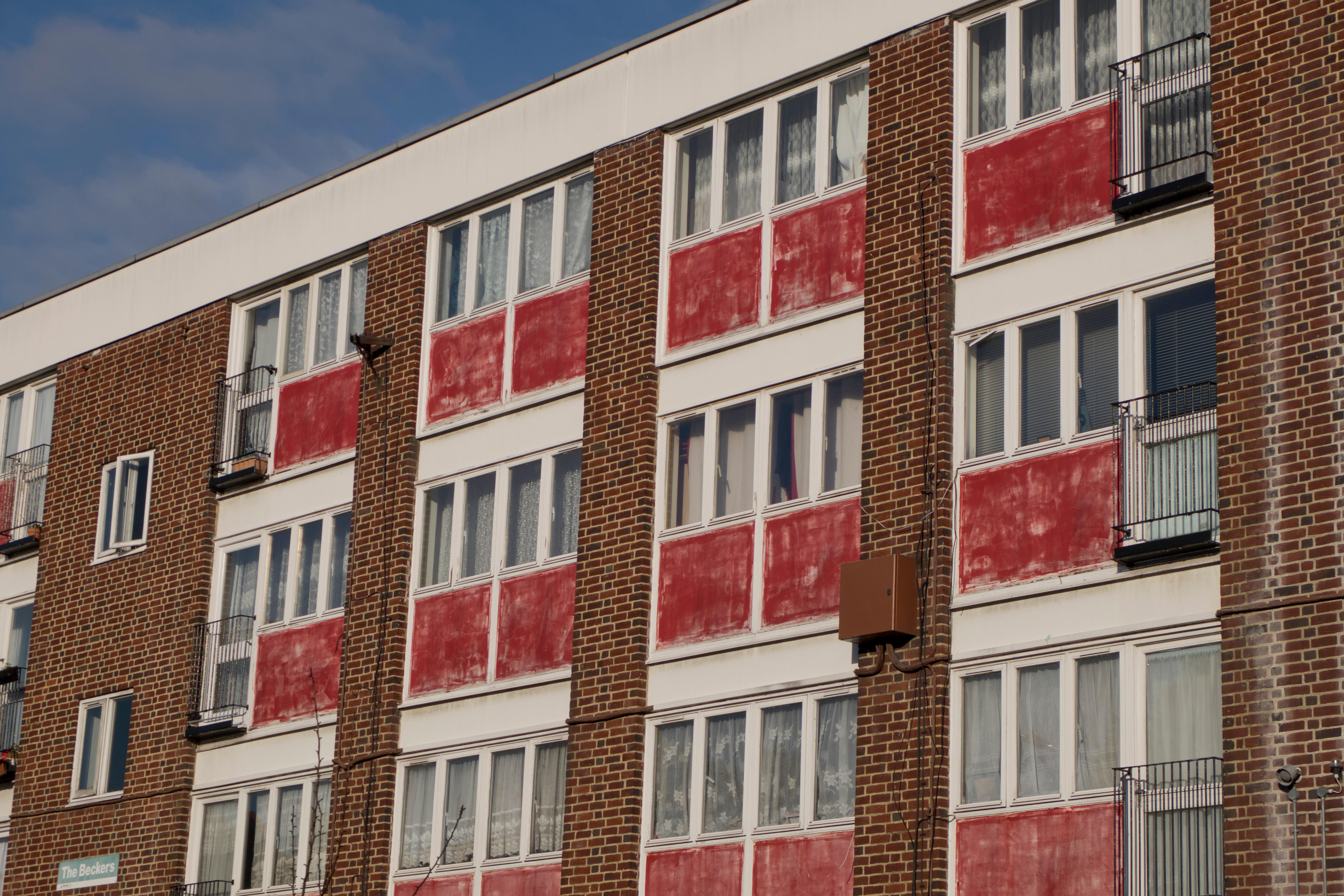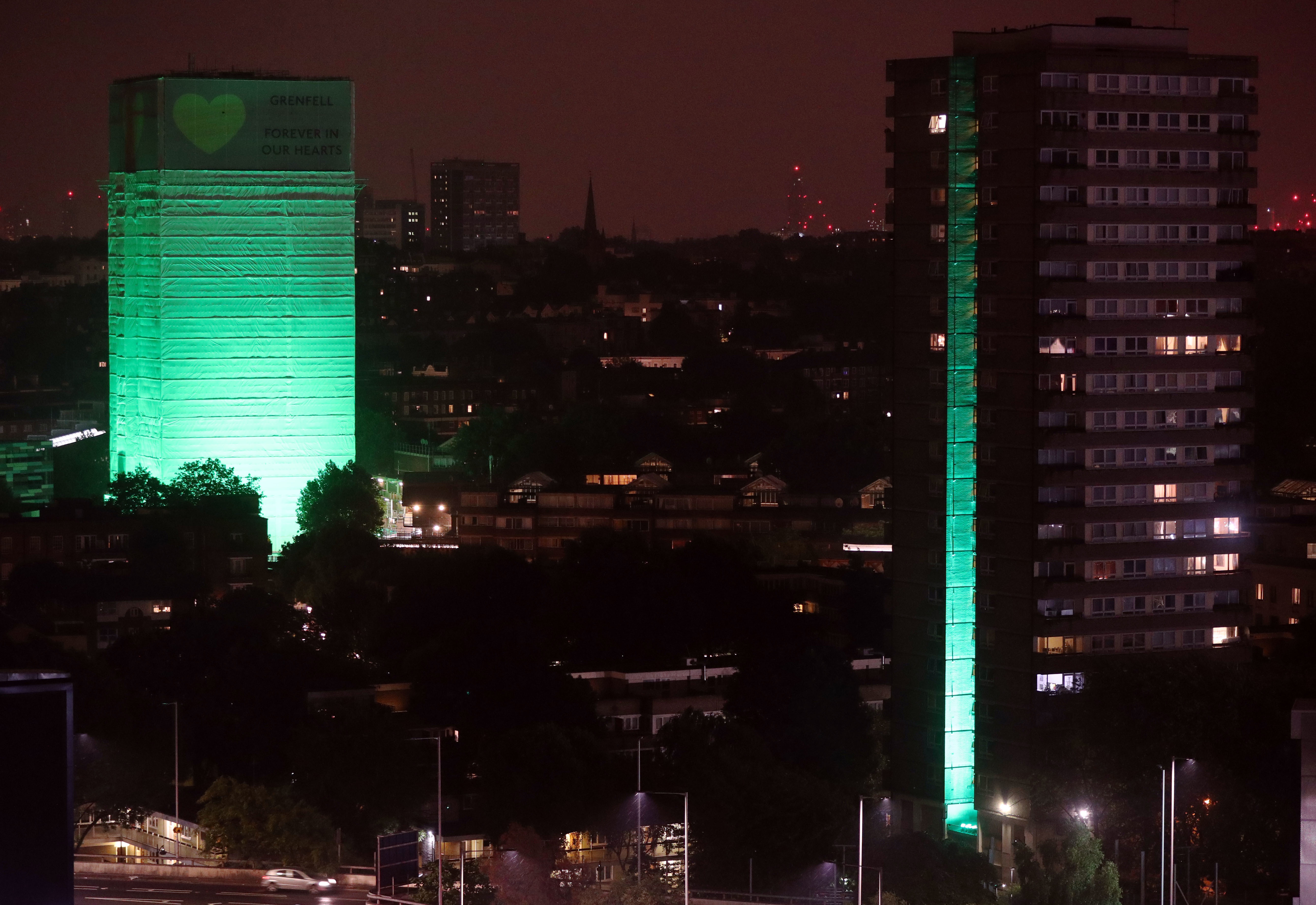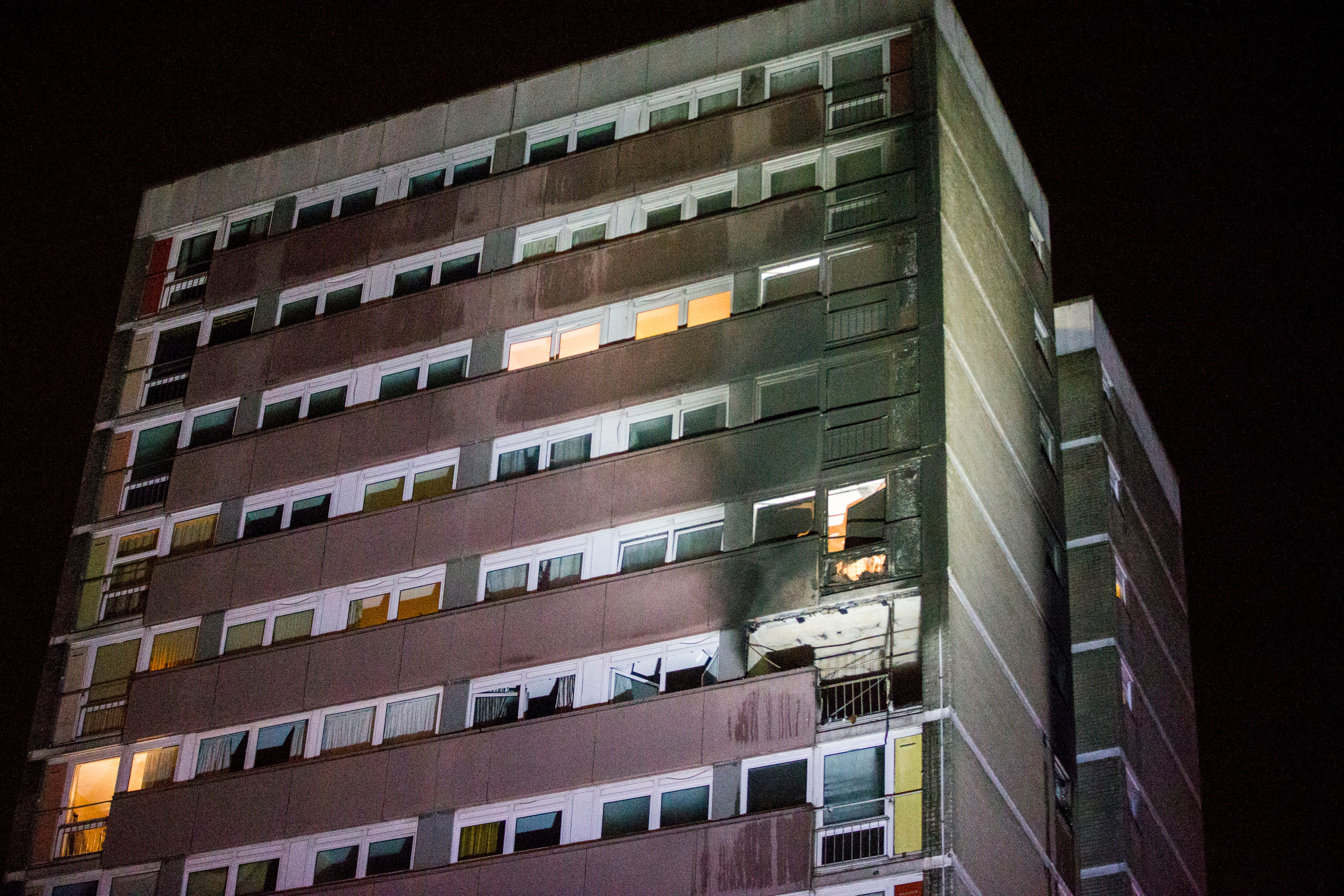You are viewing 1 of your 1 free articles
Flammable window panels: the forgotten threat
Inside Housing publishes ‘The forgotten threat to high-rise tenants’ – an in-depth look at how the focus on cladding after Grenfell has allowed a threat from flammable window panels to slip beneath the surface
In August 2016, a tumble dryer in a tower block caught fire. It was in the kitchen of a flat on the fifth floor of Shepherd’s Court, a 17-storey block in west London. The fire burned fiercely and flames burst out of the window.
There was a time when this would have been as far as the story went.
Thirty years ago, London was governed by building regulations which banned the use of combustible materials on high-rise buildings. These regulations stretch right back to the Great Fire of London in 1666 and are said to have saved the city from disaster during the incendiary bombing campaigns launched by the Luftwaffe during the Blitz.
But these rules were swept away in a flurry of deregulation in the mid-1980s. In the intervening years, any number of combustible materials have been added to the outside of London’s tall buildings.
So when the flames from the tumble dryer fire reached the outside of Shepherd’s Court, they did not meet brick. Instead, they attacked a stainless steel panel installed beneath the window of the flat above. This panel was covered in timber and polystyrene insulation. As the heat from the fire rose, the metal covering fell away, and the flames tore into the combustible timber and polystyrene.
It eventually took 120 fire fighters to bring the fire under control. A column of black smoke from the fire curled high into the London skyline – a dark warning of the events that would follow just 10 months later and one mile away at Grenfell Tower.
The horrors of Grenfell have made the country well aware of the danger posed by combustible cladding. But if anyone believes that this is all we need to worry about when it comes to combustible materials on high rises, they are wrong. Shepherd’s Court was not the first tower block fire to spread through combustible window panels. This is also what happened, with deadly effect, at Lakanal House in 2009, and Garnock Court in 1999.
Like cladding, the use of combustible window panels boomed during the 1990s and 2000s. Like cladding, a combination of ambiguous regulations, refurbishments carried out on shoestring budgets and the promotion, at a national level, of insulation and aesthetics as priorities above fire safety have made their use common.
Data compiled exclusively by Inside Housing suggests widespread use of these panels on the country’s council-owned tower blocks. But our research also reveals widespread gaps in our knowledge. Many councils have no information on whether such panels are installed on their high rises. Many of those that do, do not know what materials they are made of. How many buildings exactly have these panels? How quickly would fire spread through them? Are the residents safe?
These are urgent questions. But right now, amid a narrow focus on cladding systems, they are not being asked. The fear among experts is that it will take another deadly fire to see them addressed.
What are window panels?
Window infill panels look entirely unremarkable. They are a common feature on high rises: coloured boards, usually shiny plastic or metal, sitting directly below or in between windows.
They are quite simple composite panels – typically a sheet of metal, covering an insulation material, and sometimes held in place with wood.
Architects use them for decorative purposes – to add a bit of colour to bland, brutalist facades, but the primary purpose is insulation. To fit within the window set they must be thin. And if you want something to be thin, light and insulating, the chances are you will select a type of combustible insulation.
“Combustible insulation is used quite often in these sort of scenarios, because it is cheap and light and easy to work,” says David Metcalfe, director of the Centre for Window and Cladding Technology. “Window panels may be simply a decorative metal or PVC face, fitted to a timber frame and plastic insulation.”
Window panels have become more popular as building regulations on energy efficiency and heat loss have become more stringent. These rules require the different parts of a buildings to achieve a certain score for insulation performance – a measurement known as a U-value. Adding insulated panels to a window set reduces heat loss, and brings down the U-value towards the level set by guidance.
But they also provide an opportunity to game the system. The required U-value for walls is more demanding than for windows. So the more of the building that is considered a window, the easier it is to hit insulation targets – creating an incentive to install large panels. They are a feature of most major tower block refurbishments.
Grenfell itself was no exception. Panels were installed between the windows on the tower, made of aluminium sheets and Styrofoam insulation. This is a type of polystyrene made by giant American multinational The Dow Chemical Company, and best known for its use in disposable plastic cups. It is combustible.
Within the windows themselves was a smaller inset panel, made of aluminium and this time containing polyisocyanurate insulation (also combustible) made by Kingspan.
Other common options for the inside of window panels are polystyrene, polyisocyanurate or phenolic foam. The common thread with all of these materials is that they are combustible. And history shows us the risk that this can pose.
The fires
On 3 July 2009, shortly after 4pm in the afternoon, a television in Flat 65 of Lakanal House caught fire. The occupant, Jade Spence, raised the alarm quickly and called the fire brigade. But within three minutes of their arrival flames had spread out of her window and the panel above her flat was on fire.
These panels had been sold by a company called Trespa. They were added in a refurbishment carried out in 2006/07 by now defunct contractor Apollo. They comprised of an insulation material sandwiched between two thin sheets of aluminium. Trespa had a ‘fire-resistant’ and a ‘standard’ option for the core of these panels – those used on Lakanal were the cheaper, less fire-resistant ‘standard’ option. When tested, after the fire, the panel burned through in five minutes.
The occupant of the maisonette above the flat where the fire started was a 31-year-old fashion designer named Catherine Hickman. After the panel caught alight, they buckled the aluminium frame of her windows, set light to her curtains and spread through her home. She endured a terrifying 30 minutes, on the phone to emergency services, as the flames and smoke eventually killed her.
Further along the corridor, Dayana Francisquini and her children Thais (six) and Felipe (three), also perished sheltering from the flames, along with Helen Udoaka and her three-week-old baby Michelle. They were not the first people to die in a high-rise fire which spread due to window panels.
In 1999, a fire started on the fifth floor of Garnock Court, in Irvine, Scotland, and burst out through the window. Flames tore up the building in 10 minutes, forcing residents to flee for their lives. Flats on nine floors were ‘engulfed’ by flame. A disabled man, William Linton, on one of the upper floors was killed. John Moffat, a firefighter, now 55 and retired, told The Sunday Post newspaper in 2017: “It’s one of the worst fires I ever dealt with. We had to go up to the 12th floor to deal with it. It was really scary. We could see the blaze from Troon [seven miles away].”
The Garnock Court fire spread up a strip of yellow panels installed beneath the windows. It has not been possible to ascertain exactly what material was used in these panels, but a report in Building magazine from the year 2000 describes them as glass reinforced plastic and uPVC frames.
These were the fires which claimed lives. There have been other near misses. Everyone escaped from the Shepherd’s Court fire of August 2016, but in some instances it was a close call. The fire spread up the building via panels which, like at Lakanal, were installed in a 2006/07 refurbishment by a now defunct contractor – in this instance Connaught.
A report, released to Inside Housing under the Freedom of Information Act after the blaze, revealed the panels were composites – made of a 1mm stainless steel sheet mounted on top of 17-23mm of blue foam plastic and a plywood board, the edges enclosed by plastic foil. When attacked by the flames, the metal sheet fell away and exposed the foam and wood to the fire.
After Inside Housing reported on the panels at Shepherd’s Court, Michael Carlish, the construction project manager who worked for Hammersmith & Fulham Council to lead the refurbishment work which installed them, spoke out.
In a candid interview, he said it had never crossed his mind that he was adding to the fire risk of the building.
“There is a flaw in people’s thinking about how materials will behave when exposed to flame,” he said.
“It’s not within the imagination of the people carrying out the risk assessments that the panel can come away and expose the flammable materials behind.
“That means they are placing reliance on the covering material, and not thinking about the full additional fire load they are adding to the building.”
This blindspot, Inside Housing’s research reveals, is widely shared.
Widespread use
Inside Housing sent Freedom of Information Act requests to all of England’s stock-holding local authorities asking if infill panels are installed on their towers, when they were fitted and what materials they are made of.
The results are enlightening. Sixty-six councils, owning a total of 2,016 high-rise buildings, responded to the request – around half the country’s 4,000 high-rise social housing blocks.
Among them, these councils were able to identify 117 towers which have been fitted with some form of window panel. These figures come from 19 councils and show the panels were typically installed in refurbishment projects from the mid-1990s to the late 2000s.
Among those who knew they had panels, only a select few were able to define the materials used. For those who were able to determine the material, it was clear that the use of combustible materials was widespread. Stockport, for example, has phenolic boards fitted to 16 of its 22 towers. Stevenage has three towers with high-pressure laminate panels and polystyrene insulation. Gateshead and Gravesham use Styrofoam and Birmingham has 26 towers with panels comprised of aluminium and either polystyrene or polyisocyanurate insulation.
Others simply did not know the material. Newham in east London, for example, said 11 of its 88 towers had some form of window panel. “The material used is currently under review,” the council said. Kirklees and Hillingdon also said they planned testing to establish the material. Others such as Doncaster, Lincoln and Sedgemore simply said they did not know what the panels on their buildings were made of.
It is not to be assumed that all of these panels pose a fire risk. They will be of different design, different thickness and different installation. But not a single council holding records said their window panels contain no combustibles. And on the outside of a high-rise building that at least introduces the potential for things to go wrong.
It is also unlikely that this data tells the whole story. Eleven councils, collectively owning 747 towers, said they had no records on whether or not their buildings have panels – let alone what material they are made of.
Councils with no records available:
- Southend
- Greenwich
- Enfield
- Manchester
- Camden
- Ealing
- Kensington and Chelsea
- Brent
- Southwark
- Bristol
- Lambeth
These councils include those with a history of fire safety issues. The Kensington and Chelsea (where Grenfell is located) has no data. Neither did Southwark (which is responsible for Lakanal House) or Camden, which owns the Chalcots Estate – from which residents were evacuated in the aftermath of Grenfell due to fire safety issues. Camden responded to the FOIA saying “this level of detail is not being collected as part of the stock condition survey”.
Other town halls indicated they did not know because they had not specifically been told to check by government. Manchester, for example, said “we were not asked to check this”.
Some are working to gather the data. A spokesperson for Kensington & Chelsea Council says: “We are continuing to inspect and reassess fire safety on a rolling programme on all of our estates and buildings following the handback from the [Kensington and Chelsea Tenant Management Organisation] in March 2018. This includes collecting information and acting on it where necessary.”
A spokesperson for Southwark adds: “Although we do not currently have information about panels and materials for all the towers in the borough, it is something we are collecting and are aiming to have in place by the end of the year.”
The council said it has “other fire safety measures” in place, including up-to-date risk assessments, and “works closely with the London Fire Brigade to make sure our council housing [is] as safe as possible”. Similarly Lambeth said “further scrutiny” of the materials used on its blocks “is being undertaken”.
It is also possible councils which responded saying they had no infill panels are mistaken. Among the 19 which knew of panels on their buildings, 17.7% of the blocks had them installed. With this in mind, is it likely that a further 35 councils, collectively owning 608 towers, have no panels at all?
“It would surprise me if those figures were correct,” says one expert source. “Window panels are a common feature on high rises, and it would be odd for councils with so many towers not to have any.”
Calculating the full scale of combustible window panels on tower blocks is a job for government and the owners of these buildings. But our research allows us to say with confidence that at least 117 buildings across the country are fitted with such panels.
So how has the system of building regulation let this happen?
Ambiguity and loopholes: the building regulation
Before the 1985 reforms, the building regulations which governed London were strict. Under the London model byelaws, walls of high rises had to be built from non-combustible materials.
In addition to this, they were required to provide at least 60 minutes of fire resistance. There were also measures to prevent fire spreading from window to window, a process architects call ‘rollover’. These mandated at least a 900mm gap between windows and a 60mm projection, to stop fire spreading upwards.
This system was not completely failsafe. Research in 1965 showed that in a large fire with winds blowing back towards buildings, flames could still rollover up the building. But this would happen slowly and progressively, giving people time to escape or firefighters time to tackle the blaze.
But in 1985, this all changed. In the name of simplifying the system, Thatcher’s government swept away the local rules and replaced them with a single national set of regulations. Some 350 pages of official regulation were replaced with just 24, which set broad standards about how buildings should perform.
Since this change, the government has also published official guidance to explain how to meet the regulations. In the case of fire safety, this is contained in a document called Approved Document B.
This document has become notorious for its complexity and ambiguity. What it says about windows is no exception.
At paragraph 12.7, it appears to set out a ban on combustible insulation, saying “any insulation product, filler material... used in the external wall construction should be of limited combustibility”. But this refers to walls not windows. If the panel is part of the window not the wall, then it can be interpreted as not being covered by the ban.
David Metcalfe of the CWCT, however, believes this is not the way the guidance should be interpreted. “I don’t actually think there is any ambiguity – it says combustible insulation shouldn’t be used,” he says.
Former architect and window salesman Ian Abley disagrees: “Specialist manufacturing companies make combustible insulated infill panels for windows and curtain walls, and sell them widely. That’s because they are believed to comply with the Approved Document B guidance, even for buildings over 18m in height.”
He explained that this was due to the wording of paragraph 12.7 only applying to “walls”. What constitutes a wall is not defined in Approved Document B, beyond paragraph 6.2 in an earlier section relating to the interior of a building, which does not address the question of window insulated infill panels. Separate official guidance on energy efficiency does consider the window to include the insulated panel, and treats them as different to the wall.
The guidance also sets standards for fire resistance. While combustibility measures whether or not a material burns, fire resistance considers for how long it can withstand a fire. Glass, for example, is non-combustible but not very fire resistant and will shatter in a fire.
Partly as a result of this, windows are usually exempt from standards on fire resistance. This comes down to their categorisation as ‘unprotected areas’. Exactly what Approved Document B deems an ‘unprotected area’ is a fiercely complicated topic. In some cases this can be the entire wall.
Whether or not the window panels at Lakanal House were protected or unprotected was the subject of a long debate at the inquiry. Eventually, Brian Martin, the civil servant in charge of Approved Document B, said there was no fire resistance standard set for window panels in the guidance – a fact which the lawyer representing the survivors said would “horrify” the man on the street.
In the end, the only standard which was said to apply to window panels at the Lakanal House inquest was a requirement that they be Class 0. This primarily analyses the surface spread of flame and is a poor standard with which to assess a composite material. Flames may spread slowly over a metal surface but still destroy the combustible materials behind it.
In the end, it was ruled that the Lakanal House panels were not even Class 0. While this finding threw the contractor and the council into the spotlight, it meant the guidance itself escaped scrutiny.
It should not have. In the narrative verdict into the death of Catherine Hickman, the jury said: “Even if the composite panels under the bedroom windows of Flat 79 had been Class 0, they would not have prevented the spread of fire from Flat 65 to Flat 79.”
This then was the giant warning that the standards in the guidance were too lax, and needed to change.
Ronnie King, a former firefighter and chair of the All-Party Parliamentary Fire Safety & Rescue Group, says he has repeatedly raised this with ministers following Lakanal.
“As soon as it became clear [the contractors] had put the wrong stuff on, [the government] just said ‘it’s not our fault guv’, it was the contractors. They [government] have escaped challenge on that issue,” he says.
“We’ve challenged successive housing ministers on this. But whenever we’ve raised it with them, they have said I hear what you are saying, but this will be picked up in a review of the guidance as a whole.”
This review of guidance was promised by April 2017. This deadline came and went and the review never took place. In June 2017, Grenfell Tower burned to a blackened shell, killing 72 people. There can be no more delays.
After the Shepherd’s Court fire, the London Fire Brigade wrote to Hammersmith & Fulham Council telling them the window panels taken from the building had failed fire tests. The response of the council was enlightening.
“We are surprised to be informed of any fire risk associated with the facade panels as we had no knowledge of this prior to your letter,” the council wrote in response – in a letter released to Inside Housing under the Freedom of Information Act.
How many other owners of tall buildings across the country are also unaware of the risks posed by the panels? There can be no excuse now for not investigating. Southwark, as mentioned above, is doing so. It is to be hoped that others follow suit.
But if and when the panels are discovered, what then?
More than two years on from the fire at Shepherd’s Court, they had not, as of the start of this month, been removed from the tower. They were also on the four other towers on the same estate. The council says “removal is in hand”, a building control application has been made, and some fire wardens are in place on the estate. But the simple fact is, the panels have not come down.
For the rest of the country, slowly and after much pressure, the government has proposed a ban on combustible materials on the outside of high rises. This is not yet in force, and even when it does come in it will not be retrospective. At a national level, nothing is currently planned to investigate the presence of combustible window panels on high rises and remove them if necessary.
The risks have not gone away. Coolmoyne House in Belfast caught fire in November last year, with flames spreading up the outside of the building. It is evident from images of the aftermath that window panels on four storeys are burned out and are totally destroyed on one. Arnold Tarling, a chartered surveyor and fire safety expert, has said it was “incredibly lucky” that the fire did not spread more extensively inside the building and claim lives.
Next time, there may be less luck. It can only be hoped the government, and those who manage high rises, act before this happens rather than scrambling to react afterwards. There have been enough lives lost.
Inside Housing Spotlight
Inside Housing Spotlight is a series of pieces showcasing the best of our investigative and data journalism.
Spotlight pieces:
14 December 2018: Starting to bite - how Universal Credit is making people homeless: we reveal new figures showing a clear link between Universal Credit and homelessness
9 November 2018: First Priority - the inside story of a housing association which almost went bust When a small supported housing provider entered into a series of leasing deals with investment funds, it nearly spelled disaster for its vulnerable tenants. We investigate why.
12 October 2018: The ballad of Knowsley Housing Trust the inside story of the first housing association made non-compliant by the sector's watchdog for fire safety issues
13 September 2018: How tweaked building guidance led to combustible insulation on high rises: an investigation shows how lobbyists from the plastic insulation industry supported a quiet tweak to building guidance to permit combustible insulation on tall buildings
31 August 2018: The true cost of homelessness Freedom of Information requests reveal the soaring costs of temporary accommodation
30 August 2018: The forgotten threat to high rise tenants We investigate the threat posed by combustible window panels on social housing high rises
13 June 2018: The Biggest Ever Survey of Fire Risk Assessments Data journalism revealing widespread fire safety issues in more than 1,500 tower blocks across the country
12 April 2018: A Section 106 Story An investigation into allegations of "sham transactions" involving Section 106 deals in south London
23 March 2018: The Paper Trail: The Failure of Building Regulations A lengthy investigation into the failures of building regulation that may have contributed to the Grenfell Tower disaster, and the many missed warnings
23 February 2018: The Kingspan Papers Leaked meeting notes reveal some worrying issues, including allegations of fire safety report doctoring by manufacturers
9 February 2018: Gentoo: a Sunderland story We look back at the recent history of Sunderland’s largest housing association.
25 January 2018: Homeless families face long stays in council-owned hostels we reveal how councils in London are skirting the law by using hostels to house people in temporary accommodation for more than six weeks
7 December 2017: Council house to private rent We reveal the percentage of former Right to Buy homes in the private rented sector has passed 40%
17 November 2017: Rent to buy, or rent to rent? A look at how successful the government's Rent to Buy schemes have been
7 September 2017: Once upon a time in the west The history of KCTMO in the years before the Grenfell Tower fire
11 August: 2017 Grenfell: The paper trail - our news editor Pete Apps examines seven years of council documents to tell a story of the missed opportunites to prevent the Grenfell tragedy
4 August 2017 : Knowing the risks – the most common fire safety problems in tower blocks
26 May 2017: Rents hiked for RTB replacements – Sophie Barnes reveals less than half of Right to Buy replacement homes are for social rent
12 May 2017: A stark warning – a prescient piece looking at lessons to be learned from the Shepherds Bush tower block fire
13 April 2017: Where the axe will fall – a look at plans to axe housing benefit for younger people
10 Feb 2017: Circle of Despair – the inside story of Circle's repairs and maintenance troubles
3 Feb 2017: The Benefit Cap Tightrope – Sophie Barnes unveils the first exclusive analysis of the lower benefit cap
Never Again campaign
In the days following the Grenfell Tower fire on 14 June 2017, Inside Housing launched the Never Again campaign to call for immediate action to implement the learning from the Lakanal House fire, and a commitment to act – without delay – on learning from the Grenfell Tower tragedy as it becomes available.
One year on, we have extended the campaign asks in the light of information that has emerged since.
Here are our updated asks:
GOVERNMENT
- Act on the recommendations from Dame Judith Hackitt’s review of building regulations to tower blocks of 18m and higher. Commit to producing a timetable for implementation by autumn 2018, setting out how recommendations that don’t require legislative change can be taken forward without delay
- Follow through on commitments to fully ban combustible materials on high-rise buildings
- Unequivocally ban desktop studies
- Review recommendations and advice given to ministers after the Lakanal House fire and implement necessary changes
- Publish details of all tower blocks with dangerous cladding, insulation and/or external panels and commit to a timeline for remedial works. Provide necessary guidance to landlords to ensure that removal work can begin on all affected private and social residential blocks by the end of 2018. Complete quarterly follow-up checks to ensure that remedial work is completed to the required standard. Checks should not cease until all work is completed.
- Stand by the prime minister’s commitment to fully fund the removal of dangerous cladding
- Fund the retrofitting of sprinkler systems in all tower blocks across the UK (except where there are specific structural reasons not to do so)
- Explore options for requiring remedial works on affected private sector residential tower blocks
LOCAL GOVERNMENT
- Take immediate action to identify privately owned residential tower blocks so that cladding and external panels can be checked
LANDLORDS
- Publish details of the combinations of insulations and cladding materials for all high rise blocks
- Commit to ensuring that removal work begins on all blocks with dangerous materials by the end of 2018 upon receipt of guidance from government
- Publish current fire risk assessments for all high rise blocks (the Information Commissioner has required councils to publish and recommended that housing associations should do the same). Work with peers to share learning from assessments and improve and clarify the risk assessment model.
- Commit to renewing assessments annually and after major repair or cladding work is carried out. Ensure assessments consider the external features of blocks. Always use an appropriate, qualified expert to conduct assessments.
- Review and update evacuation policies and ‘stay put’ advice in the light of risk assessments, and communicate clearly to residents
- Adopt Dame Judith Hackitt’s recommended approach for listening to and addressing tenants’ concerns, with immediate effect
CURRENT SIGNATORIES:
- Chartered Institute of Housing
- G15
- National Federation of ALMOs
- National Housing Federation
- Placeshapers
The Paper Trail: The Failure of Building Regulations
Read our in-depth investigation into how building regulations have changed over time and how this may have contributed to the Grenfell Tower fire:
